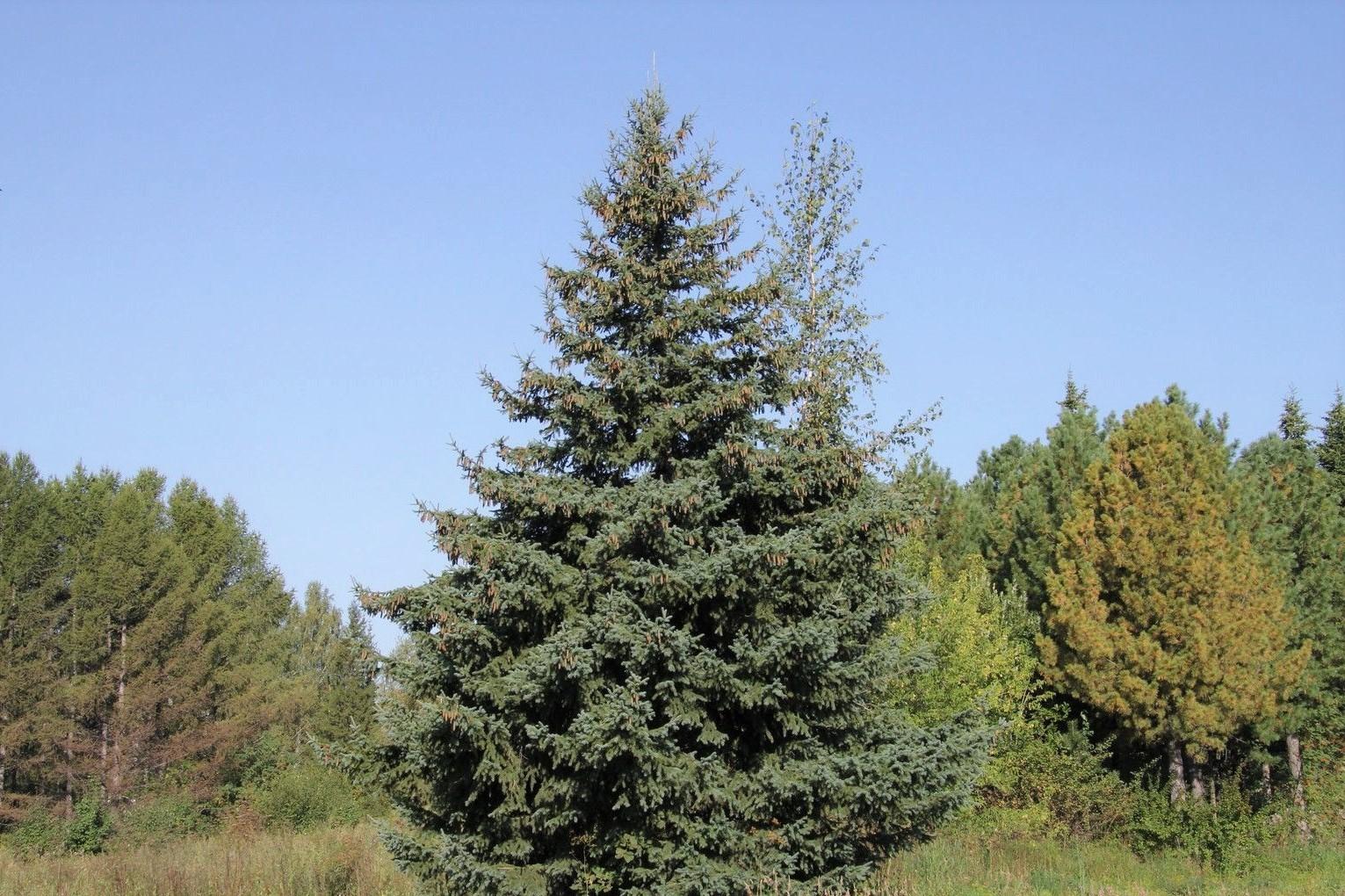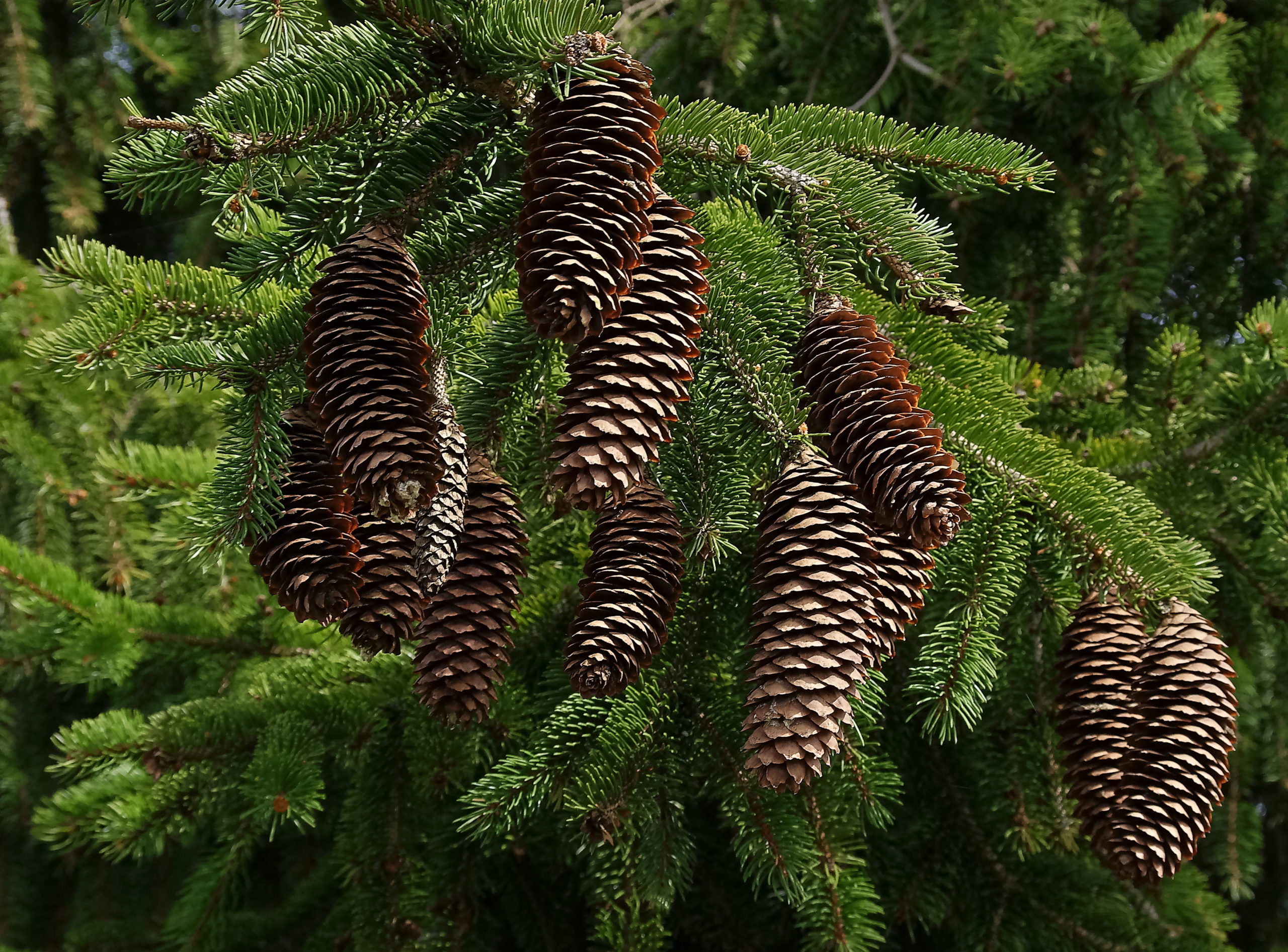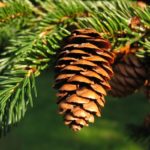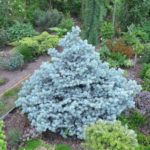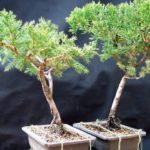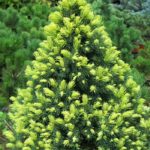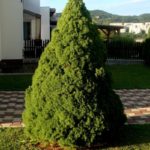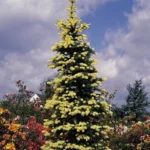Siberian spruce is a very popular crop that belongs to the Pine family. It has different types, which differ in their excellent decorative properties. Thanks to this, the plant is often used in landscape design to decorate summer cottages. To get a strong and healthy culture, it is important to adhere to certain recommendations.
Description of the species
Siberian spruce Picea obovata is considered the most frost-resistant plant from the Pine family. Most crops from this group can easily withstand prolonged temperature drops and frosts of -45 degrees.Therefore, they develop well in regions with extremely low temperatures. Such plants are large, straight-trunked trees 20-30 meters high.
This type of crop is characterized by a branched root system, which has underdeveloped central rods. The trunk diameter is 70-100 centimeters. Young trees are characterized by thin bark of a light brown hue. With age it becomes dark brown. At the same time, deep grooves appear below. The upper layers gradually peel off in the form of thin plates. A characteristic feature of Siberian spruce is the presence of short reddish hairs that cover annual shoots.
The tree has a pyramidal crown with a clearly defined apex. When skeletal branches are damaged by severe frosts, several peaks may appear on the plant at once. The side shoots are densely branched. They begin to grow too close to the surface of the earth.
This plant has medium-sized cones. Their length does not exceed 5-6 centimeters. The cones are dark brown in color and have rounded scales. Ripening occurs in September. Inside are dark gray seeds approximately 4 millimeters in size. They have thin and light wings.
Siberian spruce is considered to be very demanding on the composition of the soil. The tree needs high humidity and good lighting. In addition, the plant is sensitive to air pollution.
The lifespan of this culture reaches 350-380 years. The plant begins to bear fruit at 15-20 years of age.Forest trees mature no earlier than 25-30 years.
Distribution and range
In the wild, this variety of spruce is common in northern Europe, the Urals, the Amur region, and Mongolia. This culture is also found in Western and Eastern Siberia, in northern China. In the valleys the plant forms pure forest stands. The culture can coexist with fir, larch, poplar and other plants. On mountain slopes the plant grows solitary. It rarely rises more than 450 meters above sea level. In this case, the plant requires moist, fertile soil.
Varieties of wood
Today there are several varieties of such trees, each of which has certain characteristics.
Blue
The Siberian blue spruce Picea obovata reaches a height of 30 meters. The diameter of the trunk is 1.5 meters. The plant is characterized by a conical crown and straight branches raised upward. The culture is characterized by gray bark and hard blue needles. The length of the needles reaches 3 centimeters. The tree is also decorated with brown cones, the length of which reaches 10 centimeters.
Pechora
Siberian Pechora spruce is characterized by slow development and reaches a height of 35 meters. It is characterized by gray needles 1.5 centimeters long. It has a conical shape and a clearly defined crown.
Landing
This variety of spruce is characterized by a weak root system and a high degree of crown windage. It is not recommended to plant the crop close to fences and power lines.The minimum distance must be 4 meters. In this case, the depth of groundwater must be at least 2 meters. You should not place Siberian spruce near fruit plants.
It is best to plant a tree in late autumn. It is not worth doing this earlier, since there is a risk of rotting of the roots and damage to them by bacterial microorganisms. Planting holes for 2-3 year old seedlings should have a depth and width of about 60 centimeters. The extracted substrate should be mixed with peat, wood ash and superphosphate.
It is recommended to add dolomite flour or lime to acidic soil. It is worth pouring drainage into the bottom of the recess. It may consist of expanded clay, sand or crushed stone. The thickness of such a layer should be 20 centimeters.
The seedling is placed in such a way that the root collar is located just above the surface of the ground. At the same time, you should not compact the soil too much. After planting, the plant needs to be watered. Then it definitely needs to be mulched. This can be done with sawdust or pine needles.
Care
When caring for this coniferous plant, you must adhere to a number of rules. Under natural conditions, small spruce trees grow in dense undergrowth. Therefore, at first you should not place them in the light. Such plants require shade. Bright sun rays lead to burns of young needles. In addition, the tree loses a large amount of moisture.
Mature plants need open areas. As a last resort, partial shade will suit them. In deep shade, the crop will not look lush. In addition, the upper part will stretch in the direction of the sun, and the tree will become asymmetrical.
Siberian spruce is considered a moisture-loving plant. Therefore, in hot weather it is necessary to provide the crop with the correct water regime.Young trees need to be watered once a week. Mature spruce trees may also need watering. This is especially true after a winter with little snow and with high soil density.
Sick and dry branches can be pruned. This contributes to the health of the tree. Siberian spruces are not too demanding on the level of soil fertility. Therefore, they do not need additional fertilizing.
If the tree develops poorly or becomes yellow in color, it is worth using fertilizers for conifers. They contain fewer active ingredients than foliar fertilizers.
Pest Control
Pests can cause significant deterioration in the appearance of plants. The most common parasites that affect Siberian spruce trees include:
- Gnawing - eat tree needles. This category includes flies, caterpillars, and beetles. They mainly affect young needles.
- Sucking - this group includes hermes, mites, and scale insects. They also include scale insects and aphids. These small parasites are capable of forming large colonies and causing great damage to plants.
- Bark beetles - these include longhorned beetles, weevils, and borers. These pests primarily attack injured or cut down trees. However, sometimes healthy crops also suffer from them.
- Cone eaters - this category includes beetles, butterflies and moths.
To cope with pests, trees need to be regularly inspected and treated with insecticides. To combat ticks, it is worth using acaricidal drugs.
Application
Siberian spruce wood contains a minimum of resinous components and has a low degree of hardness. Most often it is used for the manufacture of finishing materials, furniture, and alcohol.This material is also used for the production of acetic acid, charcoal, and paper.
Like spruce, the Siberian variety contains a large amount of valuable essential oils. They are often used in the cosmetics and pharmaceutical industries. These substances are also actively used in folk medicine.
The needles are characterized by pronounced antiseptic properties. It is used to combat diseases of the lungs, digestive organs, and skin. The substance also helps to cope with pathologies of the musculoskeletal system.
This variety of spruce is often used in landscape design. It decorates parks and city streets. The needles of the plant produce many phytoncides that help destroy pathogenic microorganisms.
Siberian spruce is a fairly common crop that has excellent decorative properties and brings health benefits. For crop cultivation to be successful, it is important to provide it with proper care.

